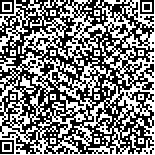| 引用本文: | 王璞,刘洋,黄智仁.一种轻量级梯度提升机的交通模式识别[J].哈尔滨工业大学学报,2019,51(9):96.DOI:10.11918/j.issn.0367-6234.201805161 |
| WANG Pu,LIU Yang,HUANG Zhiren.Transportation modes recognitionusing a Light Gradient Boosting Machine[J].Journal of Harbin Institute of Technology,2019,51(9):96.DOI:10.11918/j.issn.0367-6234.201805161 |
|
| 摘要: |
| 为研究居民出行轨迹的不同交通方式,基于已知出行交通方式的GPS轨迹信息,构建基于轻量级梯度提升机(LightGBM)的分类模型,对居民出行GPS轨迹进行交通方式分类. 首先提取轨迹的各种基础特征,并进一步结合公交网络地理信息引入Fréchet距离进行特征提取,之后对特征进行归一化处理并基于决策树模型对特征进行筛选,最后对筛选后的特征进行模型训练与预测,并通过五折交叉验证方式获取了稳定的预测结果. 结果表明:公交网络地理特征能够对模型预测精度进行有效提高,提出的GPS轨迹交通方式识别方法可达90%左右的精确度,优于各种机器学习分类模型. |
| 关键词: 城市交通 轻量级梯度提升机 GPS轨迹 特征提取 交通方式识别 |
| DOI:10.11918/j.issn.0367-6234.201805161 |
| 分类号:U495 |
| 文献标识码:A |
| 基金项目:国家自然科学基金(0,4) |
|
| Transportation modes recognitionusing a Light Gradient Boosting Machine |
|
WANG Pu,LIU Yang,HUANG Zhiren
|
|
(School of Traffic and Transportation Engineering, Central South University, Changsha 410000, China)
|
| Abstract: |
| To investigate different traffic modes for resident’s travel trajectories, a classification model was constructed based on Light Gradient Boosting Machine (LightGBM) to categorize transportation modes according to resident’s GPS trajectories. First, basic trajectory features were extracted, and then more features were obtained using geographic information of public transit network (i.e., Fréchet distance). Subsequently, the features were normalized and screened by the decision tree model. Finally, the screened features were trained and predicted by the model, and a stable prediction result was attained with a five-fold cross-validation method. Results show that geographic information of public transit network could optimize the model’s prediction accuracy. The proposed GPS trajectory recognition method achieved an accuracy of about 90%, which is superior to other machine learning classification models. |
| Key words: urban traffic LightGBM GPS trajectories feature extraction traffic mode recognition |







